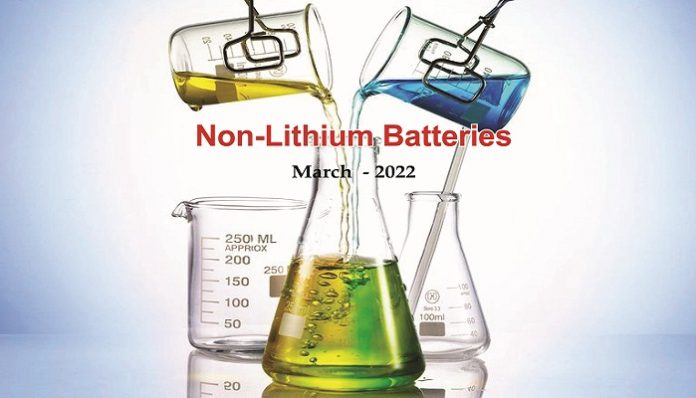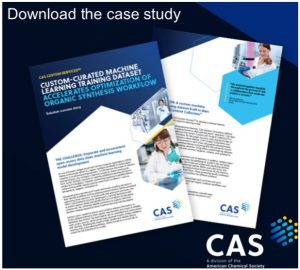Massive capacities of energy storage are required for accelerated adoption of renewable power. Metal-air batteries made from cheaper and widely available iron, zinc and aluminium are emerging as serious alternatives to lithium-ion batteries. They are safer, environment-friendly and more sustainable.
Batteries are extremely crucial to accomplish our journey towards net-zero. Lithium presently dominates the battery space with a global market value of $ 40 billion. Paradoxically, lithium-ion batteries are fraught with sustainability issues. Extraction of lithium metal and processing it into batteries are energy intensive processes. One third of lithium is mined in arid salt flats of Chile and Argentina using prodigious quantities of water. Lithium-ion batteries also need significant amount of cobalt, which is mined in one of the poorest countries of the world, Democratic Republic of Congo, using unsafe practices and widespread child labour. It is thus important to look at non-lithium battery chemistries if we have to achieve energy transition in a more sustainable manner.
Grid Storage
At present, the focus of battery applications is primarily concentrated on powering Electric Vehicles, where energy density is of utmost importance. But the limelight is gradually swinging towards stationary energy storage. Massive capacities of grid storage are required if renewables have to penetrate deeper into the economy. The energy storage in this application is required not just for few hours, but continuously for several days and weeks to even out the seasonal vagaries of renewable power. Metal-air batteries are emerging as strong contenders for long term grid energy storage. The levelised cost of storage (LCOS), which is the cost of storing each MWh of energy across a project’s lifetime, taking into account all capex and opex expenses, is the best metric for comparing alternative battery technologies. For a 10-hour storage period, The LCOS for zinc-air battery works out to $100/MWh compared to $125/MWh for lithium-ion system. For longer durations of storage, the gap between the LCOS for the 2 systems widens dramatically.
Metal-Air Chemistry
Metal-air batteries use a metal as the anode and air as the cathode. The electrolyte can be of different kinds – aqueous, non-aqueous and solid-state. The battery works by electrochemical reduction of the oxygen in air and corresponding oxidation of the metal. As the metal oxidises, electrons are produced at the anode which are transferred through the battery’s external circuit. Oxygen is transformed to hydroxide ions at the cathode. The hydroxide ions dissolve in the electrolyte. This represents the discharge cycle of the battery. The reverse reaction happens during the charging cycle, when electricity restores the anode’s metallic state. Different metals have been used as anodes including lithium, sodium, magnesium, aluminium, iron and zinc. The last three have created considerable commercial buzz.
Zinc-Air
Historically, the first metal-air battery was a zinc-air battery used in hearing aids as far back as 1932. The earliest zinc-air battery used a highly alkaline electrolyte that caused many corrosion problems and was not easily rechargeable. Material scientists at a German university developed a new electrolyte that contain water-repellent ions which adhere to the cathode. As a result, the water molecules in the electrolyte are kept away from the cathode and only the zinc ions from the anode react with atmospheric oxygen. The development of a rechargeable zinc-air battery has been plagued by dendrite formation on the electrode which results in short circuiting.
A Canadian start-up Zinc8 has solved this problem using a patented process to emerge as the leader in zinc-air battery technology. Zinc8’s battery consists of a generator that uses renewable power to produce charged particles of zinc. These zinc particles are then stored as a suspension in potassium hydroxide solution. When power is required, the alkaline electrolyte bearing charged zinc particles are pumped to a fuel cell where the zinc gets oxidised to generate electricity. The zinc oxide is recycled to the generator. Zinc8 is working in collaboration with New York Power Authority, the largest state utility in the US, to demonstrate the potential of its technology.
Iron – Air
The idea of using iron in a battery goes back in history to Thomas Edison. In 1901, Edison developed a nickel-iron battery as an alternative to the lead acid battery for cars. He even made a deal with Ford Motors to produce a more efficient car using his nickel-iron battery. But by the time Edison could perfect a more refined prototype, fossil fuel powered vehicles had made deep inroads with their ability to travel long distances without the need for refuelling. Edison’s invention fell by the wayside. More than 100 years later, his idea is back in a new avatar. Researchers have junked the expensive nickel in favour of freely available oxygen from atmosphere.
After years of research shrouded in secrecy, Form Energy, a start-up based in Boston, has unveiled its iron-air battery. The battery consists of thousands of tiny iron pellets, which are made to rust by exposing them to air in the discharge mode. As iron rusts, it loses electrons, which are transferred through the battery’s external circuit. During the charging mode, electricity removes the rust and iron oxide is converted back to pristine iron. The company claims it can store energy at one-tenth the cost of lithium ion batteries. This is because of its high energy density, which at 1200 Wh/kg is double that of lithium ion batteries. The lab-scale prototype is planned to be expanded into a 300 MW pilot project next year. The company conservatively estimates that one MW storage would need an acre of land. Form Energy is backed by Bill Gates, Jeff Bezos and Arcelor Mittal.
The most obvious advantage of iron-air battery is the low cost of iron and its widespread availability unlike lithium, nickel or cobalt, which are concentrated in few pockets on earth. The iron-air battery, with its low discharge rate is unlikely to set the EV industry on fire, but could offer a cheaper alternative to store thousands of terawatt hours of power to stabilise the electricity grid. The iron electrodes are robust and can survive more than 10,000 charge-discharge cycles, which translates into service life of 30 years. Availability of a robust and cheap battery would accelerate the growth of renewable power industry, which is so vital for meeting the net zero targets.
Aluminium – Air
Aluminium, which is far more widely available than lithium, has captured the imagination of researchers vying to develop high capacity batteries with ultra-fast charging capability. The trivalent aluminium has a massive advantage over monovalent lithium in that it can exchange three times more electrons. India, endowed with a huge resource of bauxite, is betting big on aluminium. Indian Oil is collaborating with an Israeli start-up to develop aluminium-air battery that may herald a welcome import substitution. Aluminium-air batteries are not rechargeable, and at the end of their life have to be replaced with a new one; the used up battery being sent for recycling. Fortunately, the infrastructure for recycling of aluminium is already well established.
Epilogue
Metal-air batteries have several advantages. They are safer, environment-friendly and offer high energy densities. Metals like iron, zinc and aluminium are widely available at much more affordable costs than lithium. It is only a matter of time before they become the mainstay of large long-term grid energy storage.
Readers’ responses may be sent to:
k.sahasranaman@gmail.com or
chemindigest@gmail.com

































